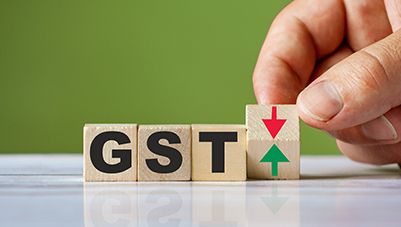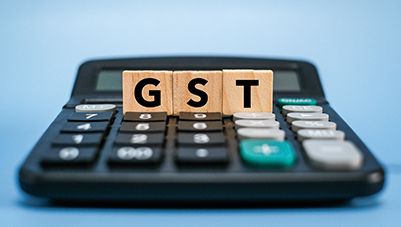The Goods and Services Tax (GST) has brought significant changes to India’s taxation landscape. Keeping up with the latest GST update is crucial for businesses and consumers alike, especially with new reforms impacting key sectors like FMCG.
What is GST on FMCG?
GST on FMCG refers to the tax levied on fast-moving consumer goods, which include daily-use products such as soaps, packaged foods, and beverages. Understanding the GST structure and applicable GST rate helps businesses comply and consumers anticipate price changes. You can check your business loan eligibility to better prepare for any financial adjustments due to these changes.
New GST rates on FMCG products in India
| Category | Example | Old GST rate | New GST rate (effective from Sept. 22, 2025) |
|---|---|---|---|
| Personal care and household goods | Soaps, shampoos, toothpaste, detergents | 18% | 5% |
| Packaged foods | Biscuits, chocolates, pasta, packaged namkeens, sauces, cornflakes | 12% or 18% | 5% |
| Dairy products | Butter, ghee, cheese | 12% | 5% |
| Kitchen staples | Pre-packaged paneer, UHT milk, Indian breads (roti, paratha) | 5% | 0% (Exempt) |
| Beverages | Aerated drinks, carbonated beverages with fruit juice | 28% + Cess | 40% |
| Dry fruits | Packaged almonds, nuts, dates | 12% | 5% |
| Medical devices | Diagnostic kits, thermometers, surgical instruments | 12% or 18% | 5% |
Impact of GST reform 2.0 on FMCG ecosystem
The implementation of GST Reform 2.0 has transformed the FMCG sector with revised tax slabs and compliance requirements affecting pricing, distribution, and taxation procedures.
For consumers
- Lower GST rates on essential FMCG products may reduce retail prices.
- Increased tax on beverages could impact beverage costs.
- Transparent pricing due to uniform tax slabs.
For businesses and manufacturers
- Need to update billing and accounting systems as per new GST slabs.
- Potential reduction in input costs with lower GST on raw materials.
- Compliance with revised tax rates and documentation. Also, businesses should check their pre-approved business loan offer to manage capital needs arising from these changes.
Navigating GST challenges in the FMCG sector
- Correct classification using HSN code is essential to avoid penalties.
- Proper utilisation of Input Tax Credit can improve cash flow.
- Ongoing training for staff on GST reforms helps maintain compliance.
Conclusion
The revised GST rates for FMCG products reflect the government’s efforts to balance consumer affordability with revenue needs. Businesses should stay updated and adapt to these changes, possibly leveraging financial options like a business loan to manage working capital and expansion effectively.

















